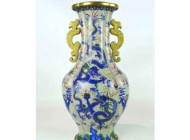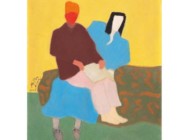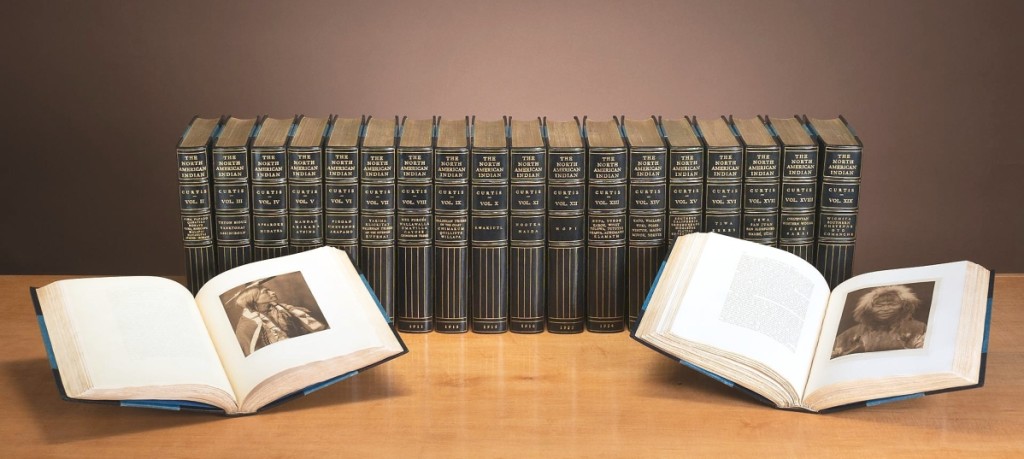
Published between 1907 and 1930, a complete set of volumes from The North American Indian brought $895,000 ($150/250,000), a record for the volumes minus the portfolios that originally accompanied them. This set was number 146 of the 272 produced, of which only 160 are known today.
Review by Laura Beach
SANTA FE – The great photographer of the West, Edward S. Curtis (1868-1952), devoted himself to recording the disappearing way of life of America’s original inhabitants. J. Pierpont Morgan funded field research for the artist’s most ambitious project, The North American Indian, produced between 1907 and 1930. Only 272 of the originally proposed 500 sets, each containing 20 volumes and associated portfolios, were made. In addition to Curtis and Morgan, original subscribers to the project included financier and railroad baron Edward Henry Harriman and the King of England.
With an introduction by Theodore Roosevelt, The North American Indian volumes are a sprawling compilation containing 1,505 photogravures, four maps and two diagrams. A full set of volumes and portfolios, the latter containing 723 photogravures in sepia on full sheets, brought a record $2.9 million at Christie’s New York in 2012. On July 26, Santa Fe Art Auction (SFAA) hammered down a complete set of the volumes minus the portfolios, which tended to become separated over time, for $895,000 including premium. SFAA president and chief executive officer Gillian Blitch says the price is a record for the volumes only.
Numbering 316 lots and staged in two sessions, SFAA’s “Christopher Cardozo Edward S. Curtis Collection” sale generated more than $1.8 million, including premium. SFAA hosts an online sale almost every month, but this was the company’s first in-person auction since late 2019.
“It was terrific. We hosted a panel discussion in advance of the sale and had a classic opening reception on Friday night that drew 150 people, the current government guideline. We probably had 150 people through our salesroom on Saturday,” Blitch continued. Only a handful of lots passed and most of those sold privately during SFAA’s post-auction brunch on Sunday. “We are approaching 98 percent sold. Honestly, I think it will be a white-glove sale by the end of the week.”
Bidding on The North American Indian advanced in $25,000 increments, narrowing to two phone bidders, both thought to be private collectors or their representatives. Executing their bids were SFAA senior vice president Joshua Rose, a former editor of several magazines devoted to American art, and Peter Bernardy, representing clients of Christopher Cardozo Fine Art.
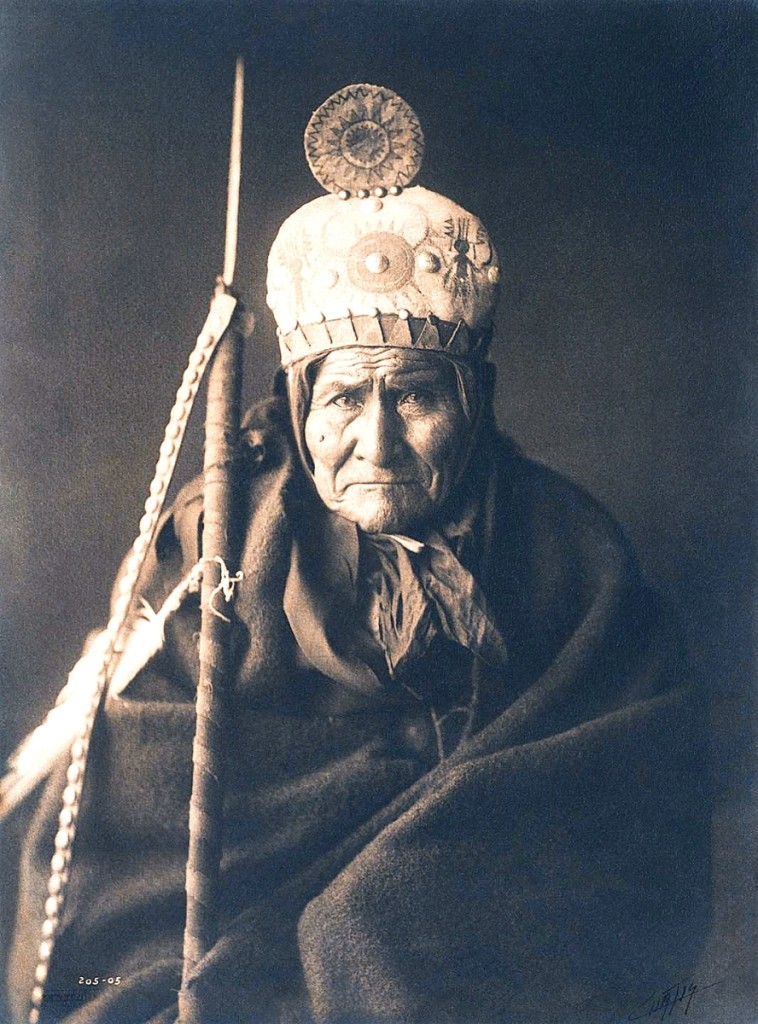
“Geronimo – Apache,” 1905, platinum print, 15-5/8 by 11-9/16 inches, $120,000 ($120/180,000). Ten or fewer examples of this photograph, regarded as the foremost portrait of the great warrior, are known. According to SFAA, the work, still in its original frame, is “arguably the single most important image from Curtis’ 30-year odyssey and the 40,000 and 50,000 negatives he created while photographing the North American Indian.”
“It had always been Chris’ plan to be here,” Blitch told Antiques and The Arts Weekly. The longtime collector and dealer died unexpectedly in February, having been in conversations with SFAA since last fall.
Blitch recalls, “As always, Chris had big plans for the future. He had decided to go back to his own photography practice and felt it was time to disperse his collection. We talked about a series of sales. This was only a very small portion of what he had. He’d already booked two weeks in Santa Fe. There was going to be a series of lectures and we planned to show the Curtis documentary, Coming To Light, directed by Anne Makepeace. It was to be a great celebration of Chris’ legacy.”
Born in 1948, Cardozo was a leading authority on the photographs of Edward S. Curtis and the founder of Christopher Cardozo Fine Art, a Minnesota-based gallery dedicated to Curtis’ work. Cardozo also operated a gallery in Aspen, Colo., beginning in the late 1980s. According to the firm, Cardozo discovered Curtis in 1973 after a friend admired Cardozo’s own sepia-toned images of indigenous Mexican people. A frequent guest curator and lender to museums and galleries, Cardozo was also the author or editor of nine monographs, the best known of which are Sacred Legacy: Edward S. Curtis and The North American Indian and the limited-edition One Hundred Masterworks, featuring selections from Cardozo’s collection.
According to the gallery, Cardozo “pioneered techniques for preserving and revitalizing historic photographs, developed cutting-edge techniques for contemporary photography, and was the founder and board chair of the Edward S. Curtis Foundation.”
Cardozo told the Minneapolis Star Tribune, “I believe I was instrumental in changing the conversation about Curtis. He’d been thought of as an ethnographer…but I got people to see his work as the artistic achievement that it was. The platinum prints, the goldtones, the cyanotypes…they leave me speechless at times.”
As illustrated here, SFAA’s sale offered a spectrum of Curtis’ works, including gelatin silver prints, toned and untoned, in various sizes; cyanotypes; goldtones and goldtoned printing-out paper prints; rare volumes; experimental and hand colored prints; and plate-cover envelopes.
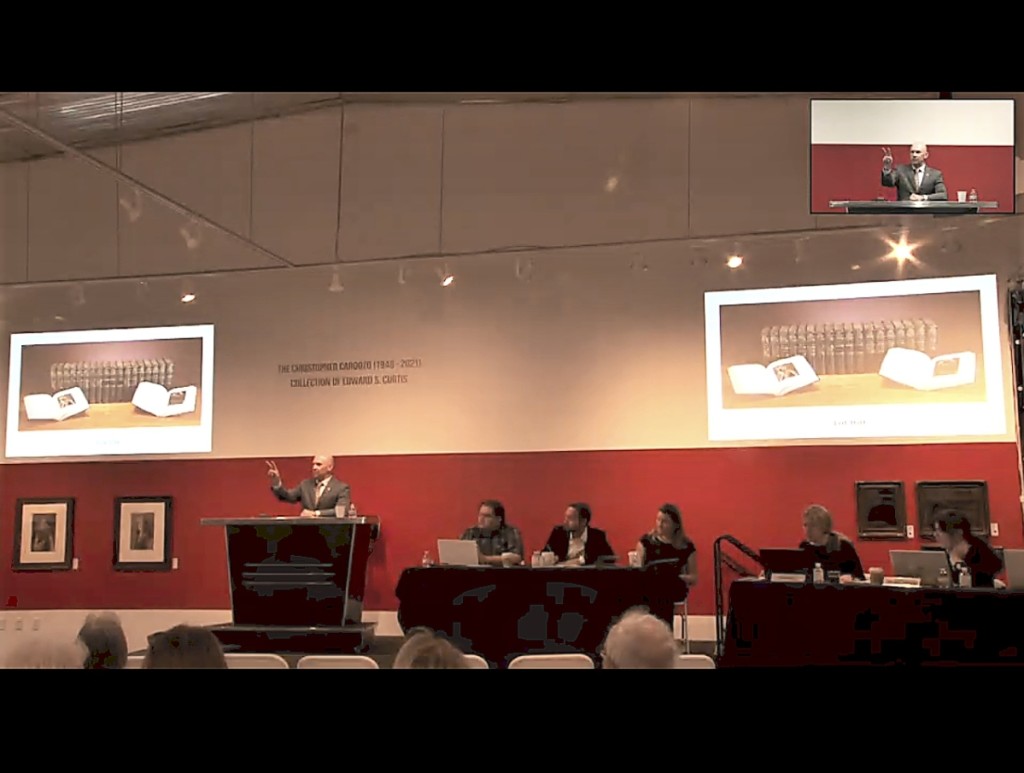
Bidding advanced in $25,000 increments on lot 160, a complete set of the 20-volume work The North American Indian by Edward S. Curtis, before settling at $895,000, including premium. Six telephones and four selling platforms contributed to the action.
Items that did well included individual volumes of The North American Indian. “They were all exquisite copies, and it is rare to find even the individual volumes these days,” said Blitch, pointing to Volume VI as an example. Published in 1911 and pertaining to the Piegan, Cheyenne, Arapaho, it sailed past its $4/6,000 estimate to bring $18,000.
There was notable interest in Curtis’ signature image “The Vanishing Race – Navaho” of 1904. A goldtone example of the print made $24,000, while an extraordinarily large silver-gelatin version measuring nearly 25 by 35 inches captured $7,200. “I don’t know if one that large has ever come to market before. They’re exceedingly rare,” Blitch said.
SFAA also offered privately about 65 pieces of Curtis ephemera, including original signed subscription agreements and an autographed copy of Teddy Roosevelt’s foreword to The North American Indian.
“Chris and I spoke everyday before he passed. He was just such a remarkable fountain of knowledge. I learned a great deal from him but feel I’ve only scratched the surface. Curtis was clearly a genius, but I believe Chris was, as well. They had much in common. Both were responsible for changing the way people saw,” says SFAA’s CEO, who anticipates future sales from the Cardozo collection.
Curtis said of his own work, “While primarily a photographer, I do not see or think photographically, hence the story of Indian life will not be told in microscopic detail but rather will be presented as a broad and luminous picture.”
Next up for SFAA is the July 24 “New Mexico Now: Spanish Colonial to Spanish Market” auction, planned to coincide with the 2021 Traditional Spanish Market, staged annually by the Spanish Colonial Arts Society. SFAA’s “American Indian + Tribal Arts, Classic to Contemporary” auction is set for August 14, coinciding with Santa Fe Virtual, August 11-15; Objects of Art Santa Fe, August 12-15; Whitehawk Antique Indian & Ethnographic Art Show, August 13-16; and the Antique American Indian Art Show, August 17-20.
Prices, as reported by the auction house, include buyer’s premium.
Santa Fe Art Auction is at 932 Railfan Road. For information, www.santafeartauction.com or 505-954-5858.











_-_$9500.jpg)






